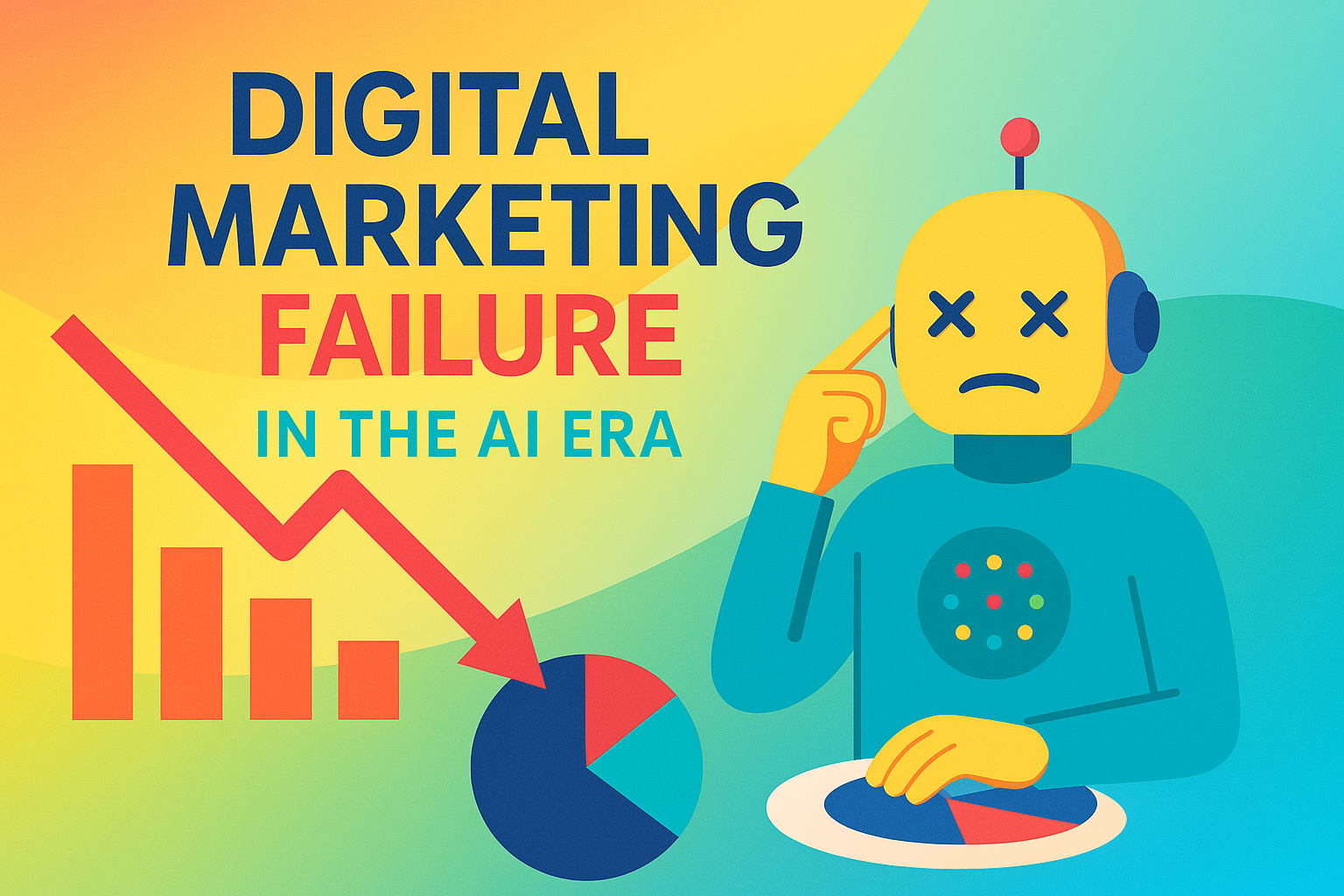Digital Marketing Failure in the AI Era: Why Brands Still Miss the Mark
In a world where artificial intelligence can predict trends, personalize content, and automate campaigns with surgical precision, you’d think digital marketing would be foolproof by now. But here’s the paradox: in the age of AI, digital marketing is failing more than ever—just in more subtle and sophisticated ways.
Brands have access to data-driven insights, predictive analytics, and automation tools that marketers a decade ago could only dream of. So why are open rates dropping, ad spend rising, and consumer trust dwindling?
Let’s unpack the truth behind digital marketing failure in the AI era—and what needs to change.
1. Data Without Insight Is Just Noise
AI feeds on data. But without strategic human interpretation, most of that data just leads to over-automation and irrelevant content.
According to Salesforce’s State of Marketing Report (2023), 78% of marketers use AI or automation tools—but only 41% say they’re fully leveraging customer data to personalize experiences. That gap shows: many AI-powered campaigns feel generic, robotic, or worse—creepy.
Failure Example: A fashion brand bombards customers with winter coat ads in June. Why? Because the algorithm picked up on a previous purchase, not current weather or context.
2. Over-Automation = Under-Engagement
AI has taken over email marketing, social media scheduling, and even customer service. But marketers are automating themselves out of relevance.
Chatbots that sound human—but don’t help. Emails with first-name personalization—but no actual value. The result? Users are tuning out.
Stat to Know: The average email open rate fell to 17.6% in 2024, according to Campaign Monitor—the lowest in five years.
Automation should amplify human connection, not replace it.
3. Creative is Still King (and AI Can’t Fake It)
AI can write a decent headline. It can generate 10,000 variations of an ad. But it still lacks human nuance—the cultural sensitivity, emotion, and timing that make messages resonate.
The biggest campaigns in recent memory—Nike’s “Dream Crazy,” Dove’s “Real Beauty”—weren’t successful because of machine learning. They won hearts because they tapped into human truths.
Failure Example: An AI-generated campaign used stock images of smiling people during a humanitarian crisis. Brand reputation: tanked.
4. Lack of Strategy: Tools ≠ Tactics
Many brands jump on AI because it’s trendy—not because it fits their strategy. The result? Tools without direction. Noise without signal.
McKinsey reports that companies with strong digital strategies grow revenue 2x faster than those without—regardless of the tech stack.
AI should serve strategy—not dictate it.
5. The Ethics Black Hole
AI can optimize for clicks—but not conscience. Brands chasing engagement with no ethical filter risk serious blowback.
- Deepfake ads
- Manipulative targeting
- Data scraping scandals
In the AI era, trust is the new currency. And once it’s gone, no algorithm can buy it back.
How to Avoid the Pitfalls
Want to survive—and thrive—in AI-powered marketing? Here’s what to focus on:
✅ Put Human Insight First
Use AI to enhance creativity, not replace it. Human-led storytelling still wins.
✅ Audit Your Tech Stack
Are you using tools just because they’re shiny? Or because they drive results?
✅ Stay Ethical, Always
Set internal guidelines for data usage, content generation, and transparency.
✅ Get Hyper-Relevant, Not Hyperactive
Don’t over-automate. Focus on delivering contextually relevant, timely value.
Conclusion: Smarter Tools Demand Smarter Marketers
AI is not the enemy of marketing—it’s the amplifier. But like any tool, it’s only as good as the hands that wield it.
In the end, the failure isn’t AI’s—it’s ours. For mistaking automation for authenticity. Speed for strategy. Data for understanding.
If marketers can remember that emotion, ethics, and empathy still matter, then AI won’t kill digital marketing—it’ll help it evolve.

